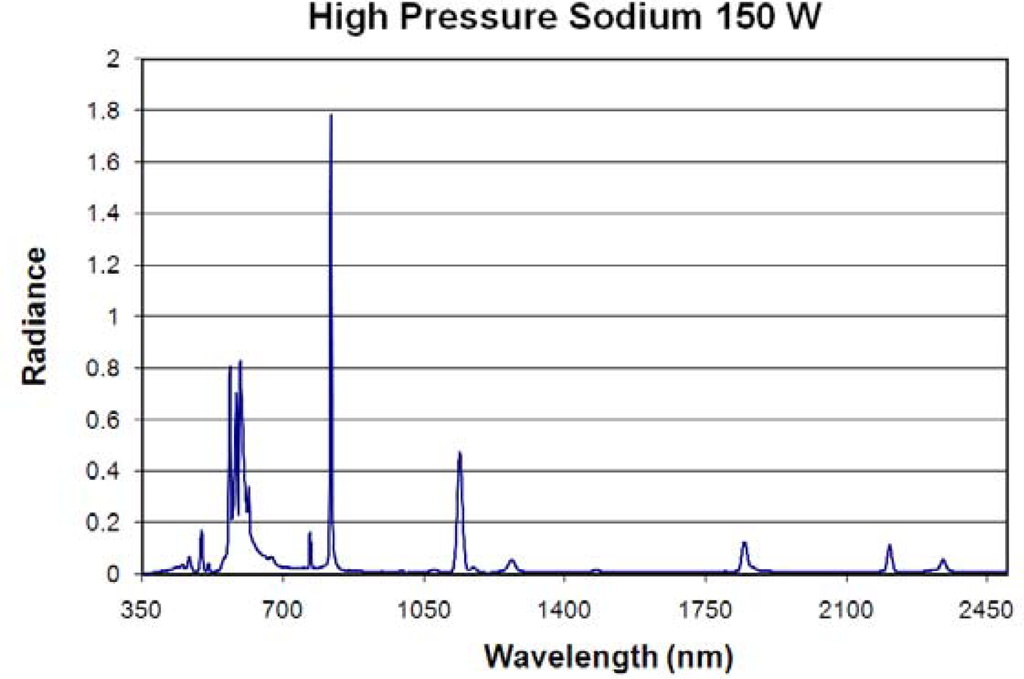naoki
Well-Known Member
Instead of hi-jacking Dot's excellent GH thread, a new thread about they myth of LED efficiency (continuation from):
http://www.slippertalk.com/forum/showthread.php?t=17927&page=57
After Bjorn mentioned that the heat generation of LED isn't so different from HPS, I was curious about this topic, too. Probably, only a few people care about this, but I thought I'll write it down since I spent a bit of time looking around the info (and learning about it).
So there are several different ways to state "efficiency of light bulbs".
luminous efficacy: expressed as lumen per watt
how efficiently electricity energy get converted to HUMAN visible light. This is the easiest statistics you can see for consumer products. But it isn't the best for plants because human eyes are more sensitive to green, and the light with lots of green seems to be efficient to human, but not to plants.
photon efficacy (or photon efficiency) of photosynthetically active radiation (PAR): expressed as micro mol/J (=micromol/s/W)
micromol/s is the NUMBER of photons emitted per unit time. The number of photons between 400-800nm of wavelengths is related to amount of photosynthesis. So this is the most relevant efficiency for plants; it tells how effectively electric energy is converted to the light relevant to plant.
radiant efficiency (= Wall-plug efficiency): % (= Watt/Watt)
Each photon has energy, and the amount of energy is determined by it's wavelength (a blue photon with shorter wavelength carries more energy than a red photon). By looking at the emission spectra, you can calculate how much total energy the emitted light carries. So this efficiency measurement tells us what proportion of electric power is converted to light. Let's say this efficiency is 30%. Then 70% of energy is wasted, and released as heat.
By looking around, I found some number of radiant efficiency of LED and HPS. Both of them are around 30%. So if you put 400W of LED or 400W of HPS in a same size enclosure, the temperature of the enclosure will be similar. So Bjorn is right about it. Here is the link (in 3rd and 5th paragraphs; search for "wall-plug efficiency"):
http://www.greenhousecanada.com/structures-equipment/lighting/leds-in-spotlight-2941
Table 1 of
http://journals.plos.org/plosone/article?id=10.1371/journal.pone.0099010
has radiant efficiency (which they call electrical efficiency) of red, blue, and white LEDs.
But as the 1st article mentioned, radiant efficiency of LED is dramatically influenced by the design. For example, with modern COB (chip-on-board) LEDs (e.g. Bridgelux Vero, Cree CXB etc), you can achieve 40% radiant efficiency easily. If you design LED to massively under drive (e.g. 100W capable LEDs with 10W driver), you can even achieve >50%. So in this case, LEDs can release less heat than HPS for a given input watt.
So LED could release less heat than HPS, but it seems that in general, both of them release similar amount of heat.
http://www.slippertalk.com/forum/showthread.php?t=17927&page=57
After Bjorn mentioned that the heat generation of LED isn't so different from HPS, I was curious about this topic, too. Probably, only a few people care about this, but I thought I'll write it down since I spent a bit of time looking around the info (and learning about it).
So there are several different ways to state "efficiency of light bulbs".
luminous efficacy: expressed as lumen per watt
how efficiently electricity energy get converted to HUMAN visible light. This is the easiest statistics you can see for consumer products. But it isn't the best for plants because human eyes are more sensitive to green, and the light with lots of green seems to be efficient to human, but not to plants.
photon efficacy (or photon efficiency) of photosynthetically active radiation (PAR): expressed as micro mol/J (=micromol/s/W)
micromol/s is the NUMBER of photons emitted per unit time. The number of photons between 400-800nm of wavelengths is related to amount of photosynthesis. So this is the most relevant efficiency for plants; it tells how effectively electric energy is converted to the light relevant to plant.
radiant efficiency (= Wall-plug efficiency): % (= Watt/Watt)
Each photon has energy, and the amount of energy is determined by it's wavelength (a blue photon with shorter wavelength carries more energy than a red photon). By looking at the emission spectra, you can calculate how much total energy the emitted light carries. So this efficiency measurement tells us what proportion of electric power is converted to light. Let's say this efficiency is 30%. Then 70% of energy is wasted, and released as heat.
By looking around, I found some number of radiant efficiency of LED and HPS. Both of them are around 30%. So if you put 400W of LED or 400W of HPS in a same size enclosure, the temperature of the enclosure will be similar. So Bjorn is right about it. Here is the link (in 3rd and 5th paragraphs; search for "wall-plug efficiency"):
http://www.greenhousecanada.com/structures-equipment/lighting/leds-in-spotlight-2941
Table 1 of
http://journals.plos.org/plosone/article?id=10.1371/journal.pone.0099010
has radiant efficiency (which they call electrical efficiency) of red, blue, and white LEDs.
But as the 1st article mentioned, radiant efficiency of LED is dramatically influenced by the design. For example, with modern COB (chip-on-board) LEDs (e.g. Bridgelux Vero, Cree CXB etc), you can achieve 40% radiant efficiency easily. If you design LED to massively under drive (e.g. 100W capable LEDs with 10W driver), you can even achieve >50%. So in this case, LEDs can release less heat than HPS for a given input watt.
So LED could release less heat than HPS, but it seems that in general, both of them release similar amount of heat.






